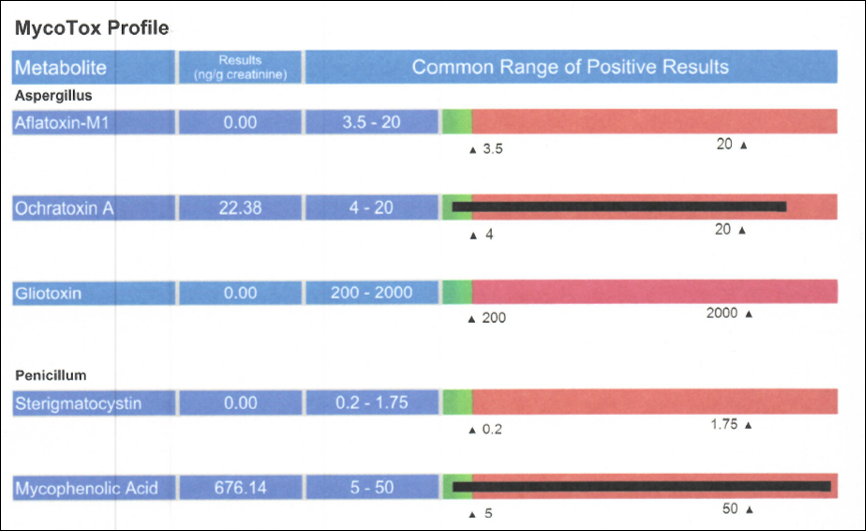I originally intended to use this medium to publish content on my opinions about the “business of law.” However, as I enter my final year before submitting the files to be evaluated for tenure and promotion, I’ve decided to “switch gears” because the majority of my research and writing will be specifically focused on the stream of research I plan to develop, which explores the intersection of employment law and health law. Consequently, here is my first blog post about chronic inflammatory response syndrome.
What is CIRS?
CIRS stands for Chronic Inflammatory Response Syndrome, which is a biotoxin illness with the following clinical definition:
An acute and chronic, systemic inflammatory response syndrome acquired following exposure to the interior environment of a water- damaged building with resident toxigenic organisms, including, but not limited to fungi, bacteria, actinomycetes and mycobacteria as well as inflammagens such as endotoxins, beta glucans, hemolysins, proteinases, mannans and possibly spirocyclic drimanes; as well as volatile organic compounds.[1]
Yes, I know. Your eyes just glazed over and your brain just said, “Whaaatttt?”
Well, in layman’s terms what that previous paragraph means is that CIRS is a malfunction of the immune system. The onset of this dysfunction occurs after an individual is exposed to a water-damaged building that contains a variety of different biotoxins. These toxins then trigger the person’s immune system to respond in a way that causes systemic inflammation, which then triggers a variety of different symptoms.
Often, the most prevalent and aggravating biotoxin that triggers CIRS is mold, which is why CIRS is often referred to or diagnosed as “mold illness” or “mold toxicity.” Mold is the non-technical term for many types of fungi. Countless genera and species are found both outdoors and indoors. Although mold is virtually omnipresent, there are many different types of mold, and not all of them generally make people sick. [2] However, there are a few, key genera/types that are toxic because their spores, after entering the body (via inhalation, absorption through the skin, or ingestion), can produce toxins or poisons that produce serious health issues. [3]
Fortunately, in about 75 percent of the population, the immune system works properly and can recognize the toxins and either remove or destroy them. [4] However, the immune systems of approximately 25 percent of the population are unable to make antibodies to remove and/or destroy these poisons. [5] This unfortunate, genetically susceptible, portion of the population are the individuals that become ill. Because their bodies are unable to remove and/or destroy these toxins, these poisons can remain and, therefore, accumulated in the body, not only because the person’s genetics inhibit their removal, but also because the toxins themselves compromise the body’s ability to rid itself of them. [6] Consequently, this accumulation ultimately produces a chronic inflammatory response to these poisons and results in a wide range of symptoms relating to many different organ systems. [7] The symptoms can include:
• Fatigue
• Weakness
• Muscle aches and cramps
• Headaches
• Sensitivity to bright light
• Unusual pains
• Abdominal pain
• Nausea
• Diarrhea
• Chronic sinus congestion
• Coughing
• Chest pain
• Shortness of breath
• Joint pain with morning stiffness
• Cognitive impairment
• Skin sensitivity to light touch
• Numbness and tingling
• Sensitivity to electric shocks
• Metallic taste in the mouth
• Excessive thirst
• Menorrhagia
• Disequilibrium
• Dizziness
• Appetite swings
• Weight gain
• Anxiety
• Depression
• Mood swings
• Night sweats
• Frequent urination
• Body temperature dysregulation
• Impotence
• Odd tics and spasms
• Seizure-like events
• Skin rashes
To summarize, CIRS is a real illness, with significant physical and physiological manifestations. Individuals may look well, but the symptoms aren’t psychological. Instead, they are victims of their genetics and their bodies are caught in a vicious cycle – the foreign antigens (mold toxins) stay in the body, causing the immune system to constantly fight back. [8] This constant battle causes so much inflammation in the body that it leads to a chronic illness, which manifests with a multitude of varied symptoms. [9] In short, CIR sufferers’ entire being suffers from friendly fire from their own innate immune system. [10]
[1] https://www.poison.org/articles/2011-oct/mold-101-effects-on-human-health
[2] TOXIC: Heal Your Body, Neil Nathan, MD.
[3] TOXIC: Heal Your Body, Neil Nathan, MD.
[4] TOXIC: Heal Your Body, Neil Nathan, MD.
[5] TOXIC: Heal Your Body, Neil Nathan, MD.
[6] TOXIC: Heal Your Body, Neil Nathan, MD.
[7] TOXIC: Heal Your Body, Neil Nathan, MD.
[8] https://www.survivingmold.com/diagnosis
[9] https://www.survivingmold.com/diagnosis
[10] https://www.survivingmold.com/diagnosis










